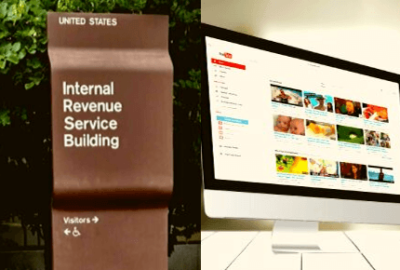Best listening experience is on Chrome, Firefox or Safari. Subscribe to Federal Drive’s daily audio interviews on Apple Podcasts or PodcastOne.
The IRS worked around the clock during the COVID-19 pandemic to send 160 million
Economic Impact Payments and handle an extended tax filing season.
Now the agency is looking to build off that momentum to accelerate a multi-year IT modernization project and digitize taxpayer services.
IRS Commissioner Chuck Rettig, speaking last week during a virtual meeting of the IRS Advisory Council, said the agency expanded telework capability to 85% of its employees during the pandemic, a capability that the agency didn’t have in February.
While the scope of its work under the pandemic forced the agency to act quickly and find workarounds wherever possible, Rettig said the agency should take a closer look at some of the lessons learned from this year and build those into the work that lays ahead in the next few years.
“A lot of what we were able to pull together during this timeframe might have had a label that says ‘pilot project.’ That’s because of the workarounds that we pulled it together. It should not imply that our electronic interactions with folks are going to disappear,” he said.
The IRS has already rolled out several new capabilities ahead of next year’s filing season. The 1040 Individual Income Tax Return Form is now available in English and Spanish, and taxpayers can now check a box telling the agency which language it should use in all of its official correspondence.
When taxpayers call the IRS customer service line, they will get access to translation services in 350 languages. Rettig said these efforts demonstrate a promising first step in improving taxpayer services under the 2019 Taxpayer First Act.
“If you want to convey to people that they’re important, and you want as an agency … to earn the trust and respect of people who interact with us, we need to be in their community, in their language,” he said. “We need to be in-person with people who don’t have broadband, and we need to respect everybody,” he said.
The scope of what the IRS is taking on hasn’t gone unnoticed. Diana Erbsen, the IRSAC’s chairwoman, said the IRS went through “extraordinary adjustments” during the pandemic by extending filing and payment deadlines and expanding its digital outreach to individuals that hadn’t yet received a stimulus payment.
“The tone at the top is set by Commissioner Rettig, along with the nothing short of heroic efforts of the IRS staff made all of this possible,” Erbsen said.
This forward momentum, she added, should help set the stage for effective implementation of the Taxpayer First Act. IRSAC members said greater digitalization of tax services would make it easier to automate the handling of data 24 hours a day, rather than the limited window of time when employees are sitting in the office. It would also free up employees that open mail or key in data to handle more productive tax administration work.
Rettig said he agreed with that assessment, adding that the legislation is the “future path” of the agency and a vehicle to implement change.
“Everybody here is driven now, and they feel a degree of momentum internally. You might not see any momentum externally, but I can tell you being on the inside, I think people feel that we have some momentum, and we’re looking to capitalize on that,” Rettig said.
The IRSAC has highlighted implementing the Taxpayer First Act and accelerating the digitization of taxpayer services as two priority areas in its annual report — but a third area, chronic underfunding, falls on Congress.
Ben Deneka, the council’s vice chairman, said chronic underfunding of the IRS has become a “fundamental risk” to tax administration that underpins nearly every category of enterprise risk that the agency has identified. IRS collects 96% of the federal government’s gross receipts that fund over 80% of federal government spending.
The IRS has gone through a decade of budget cuts that have made it harder to staff up its enforcement and taxpayer service operations or support multi-year efforts to modernize its legacy IT systems.
Between budget cuts and a hiring freeze that ran from 2011 to 2018, the IRS has about 17,000 fewer employees than it did a decade ago. About 35% of its current workforce will reach retirement eligibility within the next three-to-five years.
The increased complexity of preparing tax returns has also led to a higher call volume to the IRS’ practitioner priority service line, a phone line for practitioners to ask the agency questions.
The IRS received 4 million calls on this line through mid-October, a 27% increase compared to the call volume in 2019. That surge in calls led to wait times sometimes lasting over two hours. IRSAC recommends the agency offer text chat to tax practitioners expand options to securely transmit documents to the IRS during these online chat sessions, a feature that the IRS has already piloted.
The agency’s mantra for many years has been “doing more with less,” but former IRS Commissioner John Koskinen warned that eventually, the agency would have no choice but to do “less with less.”
Rettig told the council that IRS employees feel motivated to make that agency’s work more accessible to taxpayers, but needs to convince Congress to restore the $1-2 billion in annual funding that it’s lost over the past decade.
“You’ve never heard me say that this IRS is going to do less with less,” Rettig said. “The IRS wants to do more, and in my mind, when they say that, it’s a call to Congress to provide us with consistent, multi-year adequate funding to do the projects that every American deserves.”
Copyright
© 2024 Federal News Network. All rights reserved. This website is not intended for users located within the European Economic Area.

